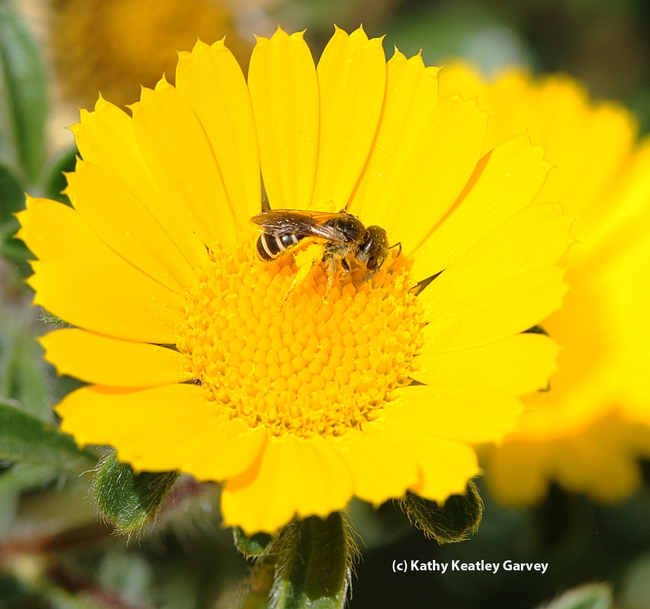The latest edition of Fremontia, a publication of the California Native Plant Society (CNPS), is devoted to the state's declining prairies and grasslands.
"Humans are largely responsible" for this decline, writes editor Bob Hass. "We exploit natural resources for basic human needs and for consumable. But too few of us pay attention to the effect our actions have on the environment. Fewer still make the connection between an eroding environment (polluted water, air, soil from toxic chemicals) and cumulative impacts to human health (cancer, birth and immune system defects) or to plants and animals (disease, acid rain, increased toxins accumulating in the food chain)."
So true. And as Hass says "Nature cannot protect itself from what we humans do to the environment, but we can."
We were especially interested in the article, "Native Bees and Flowers in California Prairies and Grasslands" by native pollinator specialist Robbin Thorp, emeritus professor of entomology at UC Davis and a 35-year member of CNPS.
He quoted John Muir in his book, The Mountains of California: "When California was wild, it was one sweet bee-garden throughout its entire length...the Great Central Plain of California, during the months of March, April, and May, was one smooth, continuous bed of honey-bloom, so marvelously rich that in waking from one end of it to the other, a distance of more than 400 miles, your foot would press about a hundred flowers at every step."
Not so today! No wonder the bees are suffering from malnutrition (not to mention other issues).
Thorp calls attention to some of the flowers found today in the Central Valley grasslands. "Our state flower, the California poppy (Eschscholzia californica) produces no nectar, but only pollen as a reward to bees...Generalist bumble bees (Bombus spp.) and sweat bees (Halictus spp.) are the main visitors, along with small pollen feeding beetles."
Thorp illustrated his article with a beautiful photo by Davis plant/insect enthusiast and photographer Gary Zamzow of the yellow-faced bumble bee (Bombus vosnesenskii) foraging for pollen on a California poppy. Thorp also included several other photos.
No doubt you've seen honey bees foraging on California poppies, but as Thorp says, poppies provide no nectar, only pollen.
Attached Images:

Worker bumble bee, Bombus vosnesenskii, foraging on a California poppy. (Photo by Gary Zamzow)

This photo, of a female sweat bee, Halictus ligatus, on a gumplant also appears in the Fremontia article. (Photo by Kathy Keatley Garvey)

Male cuckoo bee (Triepeolus sp.) foraging on a gumplant. This is another photo in the Robbin Thorp. piece. Cuckoo bees do not gather pollen. (Photo by Kathy Keatley Garvey)